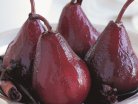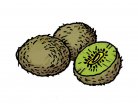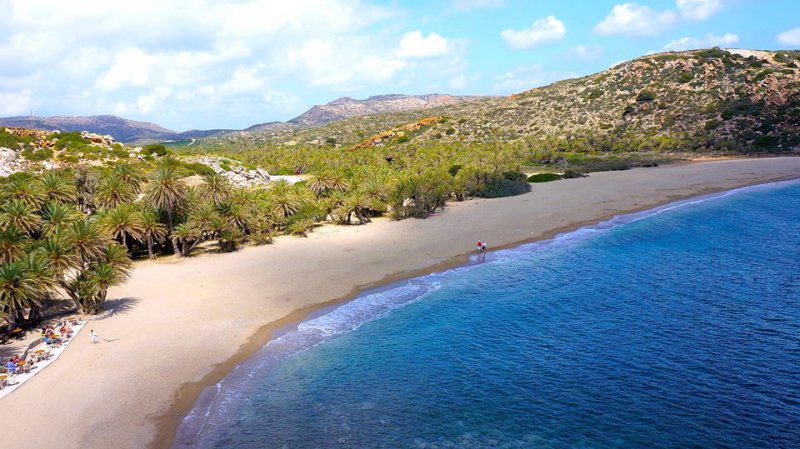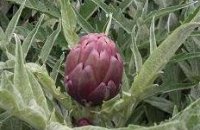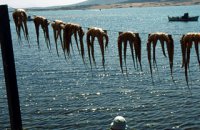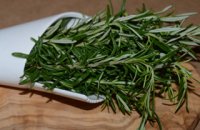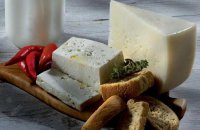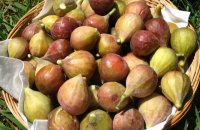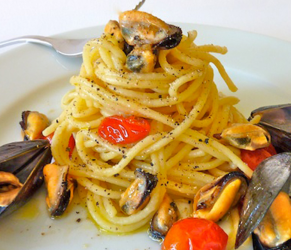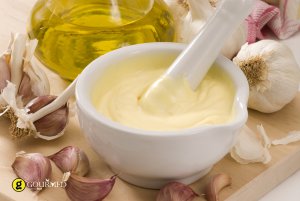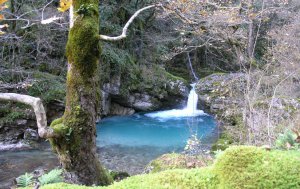Crete, the Mediterranean's third largest island, is famous firstly for its rich flora, and then secondly for its tremendous tradition of dairy products and olive oil. The flora allows the island's livestock, primarily sheep and goats, to flourish so marvelously and, in turn, supports the production of such delectable dairy products.
Remarkably, of the total quantity of plants that flourish throughout Europe, approximately 70 percent can be found on Crete. Particular highlights include thyme, oregano, savory, mint, dittany, chicory, sage, and marjoram. Due to the island's warm climate, it is possible for milk-producing animals to graze freely nearly all year round on such richly nutritious vegetation. Only during the limited dry and rainy seasons are they fortified with vegetable-source animal feeds. As a result of this quality diet, the milk which they produce is rich in organoleptic characteristics, pure and wholesome, while flavourful and aromatic. The majority of the island's milk comes from sheep, while a smaller amount (about 30%) comes from goats.
The island's tradition of admirable dairy products is deeply ingrained. In fact, archaeological excavations have shown that the island's production of cheese pre-dates the Minoan civilization. According to the island's mythological tradition, Zeus, the almighty father of the ancient gods, grew up in the Cretan mountainside, nourished by the milk of the goat Amalthea. From ancient times through till today, the island's renowned dairy repertoire has included graviera, kefalotiri, two types of athotiro - fresh and aged - as well as fresh cream cheese, made chiefly from low-fat goat's milk, and, of course, yoghurt.
Similarly, the island's fertile land and mild climate have provided the olive tree with the ideal home since ancient times. In fact, the island-wide practice of harvesting olives and producing olive oil dates back to the Early Bronze Age, or more specifically, the third millennium BC. Archaeological finds indicate the incredible importance that the olive tree had within the Minoan empire, playing a predominant role both both within the people's diet and within ritual. Excavations have produced stone olive presses, as well as oil lamps and storing jars for oil. Various representations of the tree, as well as its branches, have been discovered on all sorts of vessels, including sarcophagi.
Olive groves in Crete occupy some 160,000 hectares, 55% of the island, as around 30 million trees are cultivated by 95,000 families. The spike in Cretan olive oil production over the past 40 years has been spectacular, with production capacities duplicating twice over. The quality has also improved significantly; in the last 15 years, almost all Cretan oil (90%) is of extra virgin quality with an acidity level of less than one degree. Olive oil consumption is very high on the island, reaching close to 30 kg per person annually -the highest consumption of olive oil per capita in the world.
Foreigners visiting Crete are often astonished as they realize to what an extent the olive tree is cultivated in this little corner of the south-eastern Mediterranean. The variety is striking: olive trees in Crete grow close to the towns and in the towns, on the fertile plains, on the sunny hills and on the high mountains; some are small, others large, others so old that their trunks stand out among the orange groves and the endless vineyards.
There are three different categories of olive trees in Crete, each kind producing mammoth quantities of both olive oil and edible olives.
- The Olea Europea variety, Mastoides (Koronaiki): this is a very important variety not just in Crete but in all of Greece, in spite of the fact that the olives it produces are quite small. It is resistant and can be grown up to an altitude of 500 metres. It bears fruit regularly, each tree yielding an average of 150 kg per year. This variety is found in the following regions in Crete: Chania, Heraklion, Lassithi and Sitia. It produces an oil of excellent quality and fragrance.
- The Olea Europea variety, Media oblonga (Throumbolia-Chontrolia): this variety is the classical one in Crete, and though part of the traditional culture has been replaced nowadays with the Koronaiki variety (see above), it continues to be much grown across the island. It can be grown at an altitude of 700 metres and gives a rich and sweet oil on the condition that the olives are picked as soon as they fall from the tree and immediately pressed.
- The Olea Europea variety, Mamilaris (Tsounati): this is the kind most resistant to climatic extremities. It is grown mainly in the area of Chania and produces olive oil that is truly first-rate.




























